Wait 'til you see these garden design ideas at Arizona artist Janet's Orr's home! Her whimsical outdoor art gallery shows her eye for design, skill as a ceramic artist, and superb succulent savvy.
For over 30 years, Janet has enhanced her contemporary home and transformed its landscape with an assortment of succulents and desert-adapted trees and shrubs. Beautiful in their own right, these blend with and provide a backdrop for colorful sculptures and mosaics---Janet's own and those by sculptors she admires. This colorful, inviting garden is in Paradise Valley, an upscale suburb of Phoenix.
In my video, "See an Artist's Desert Succulent Garden," Janet takes us on a tour, shows dramatic works of art, talks plants, and (drum roll) introduces us to her 21 pets. (I won't spoil the surprise, but I will tell you the animals are intriguing, cute in their own way, and she's not at all weird for having them.)
A dozen ideas from Janet's garden
1. Repeat plants that thrive
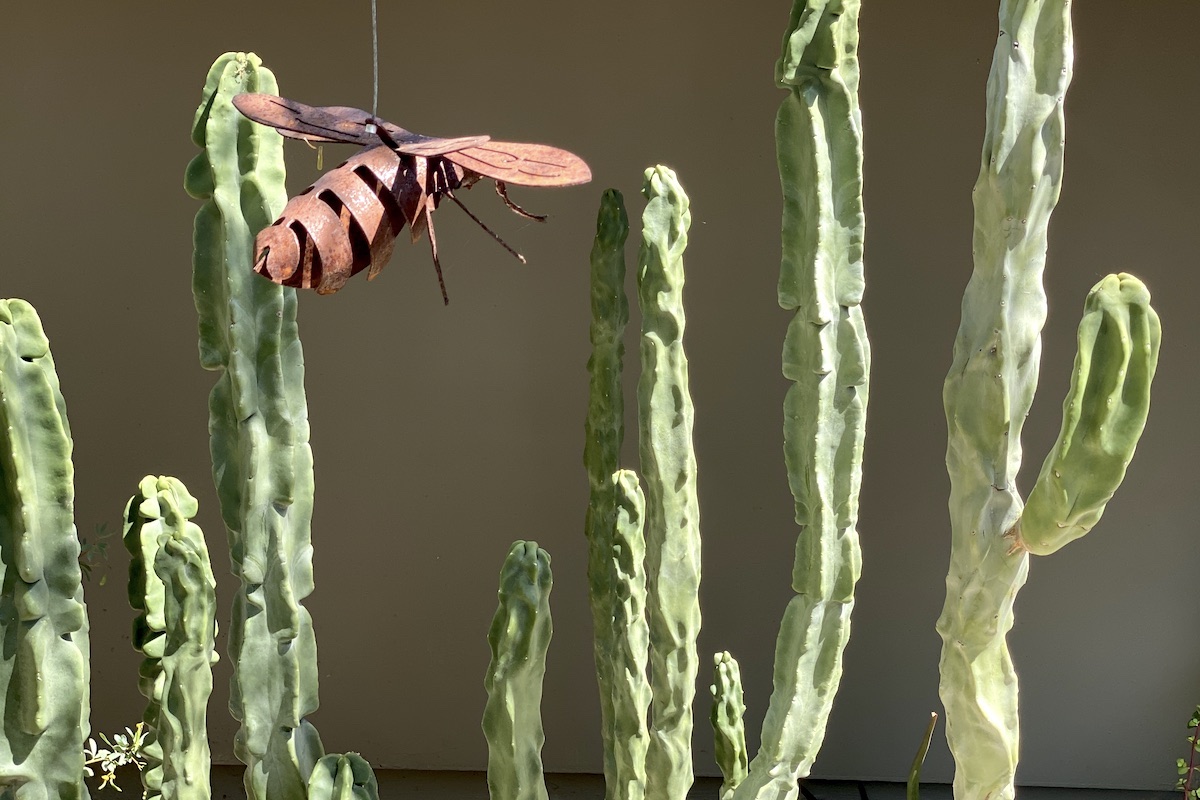
Totem pole cactus (Lophocereus schottii)

Golden barrels
Janet has hundreds of golden barrels and columnar totem pole cacti that she's propagated and planted over the years. Their repetition is stunning, lends cohesion to her garden, and is practical: they're supremely suited to the her area. No pampering needed!
2. Showcase your artistry and others'
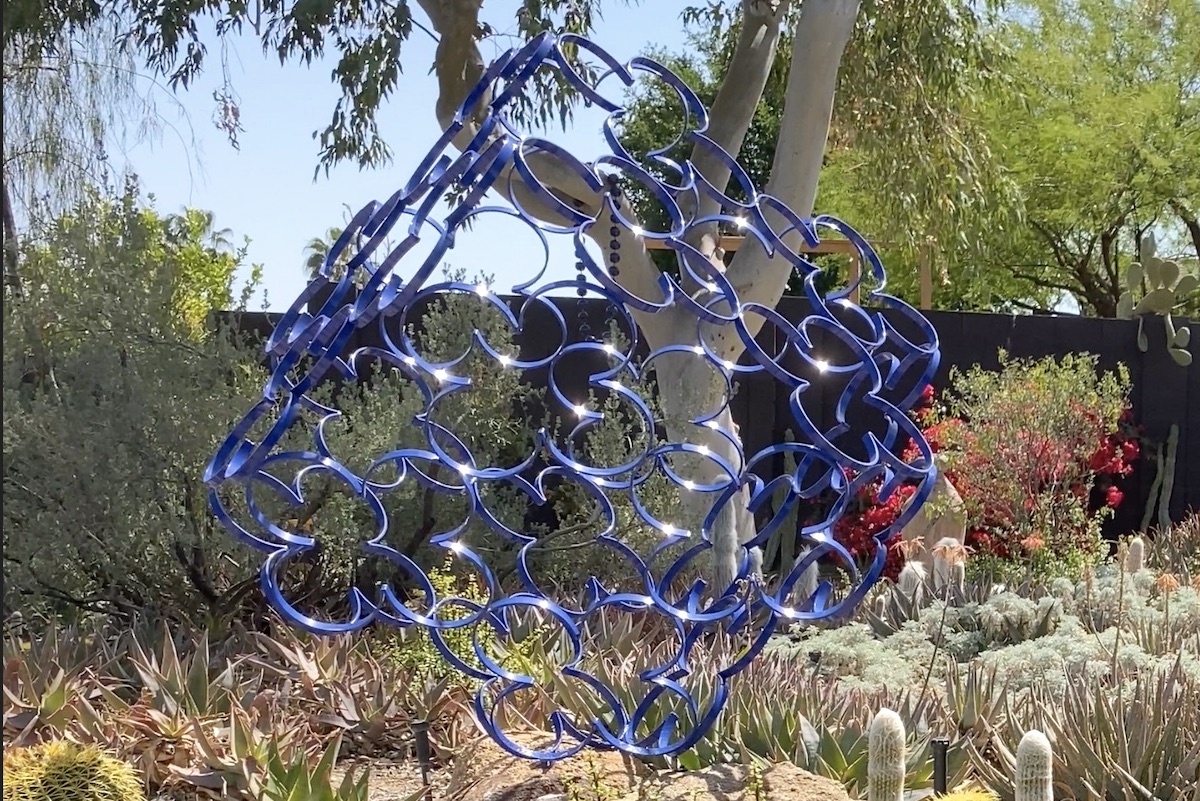
Blue wrought iron cube
You say you're not an artist? I disagree. Visit a purveyor of architectural salvage (old doors, windows, grills, grate, tiles and more) and let your imagination run. Any item that can withstand the elements has garden-decor potential. Alternatively, hunt down sculptors in your area who create outdoor art. One or more object d'art will add personality and interest to your garden and provide the perfect focal point.
3. Add color and whimsy

Tubular ceramic pincushion sculpture by Janet Orr
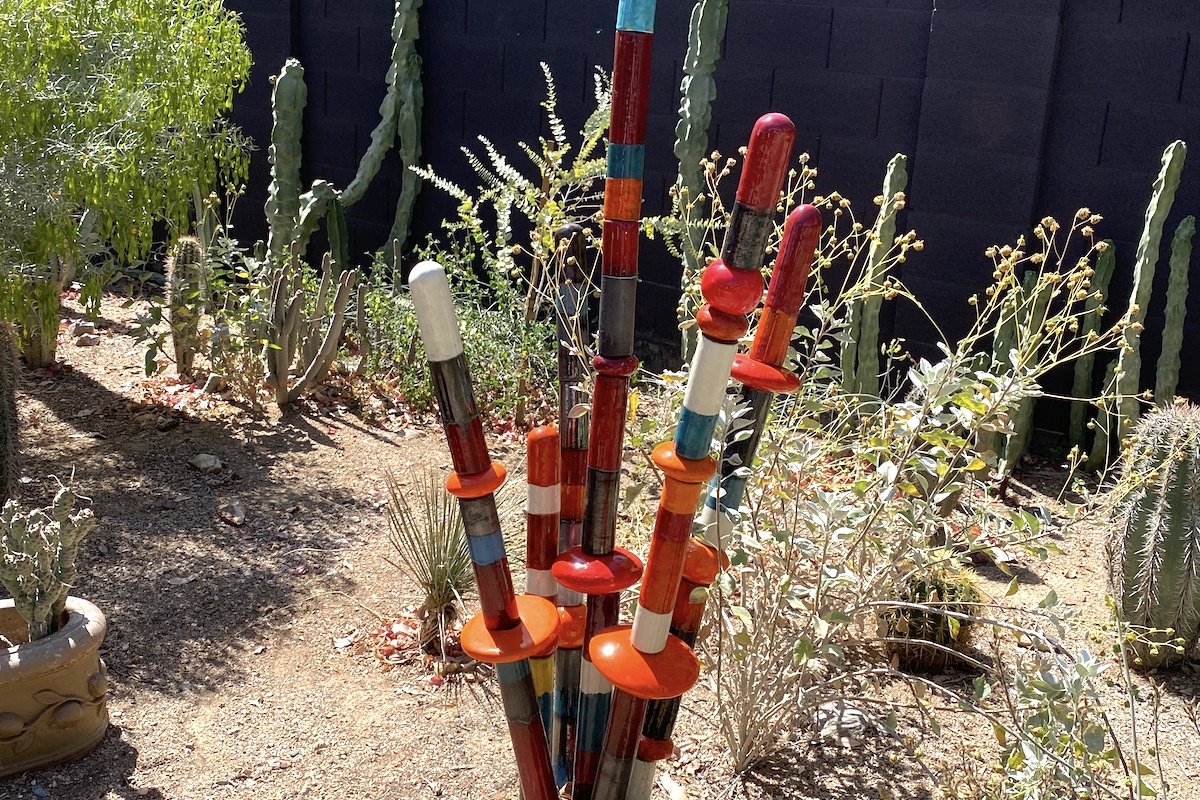
Spray of ceramic poles by Janet Orr
Janet's garden has fun discoveries: one-dimensional metal desert tortoises traipse along the top of a wall; thumb-sized faces gaze from mosaics; stacked ceramic balls and cylinders add pops of color. Consider: All you need are ceramic items that can be threaded onto rebar. Have the rods cut or curved by a metalsmith, then anchor them your garden.
4. Find a "metal guy"
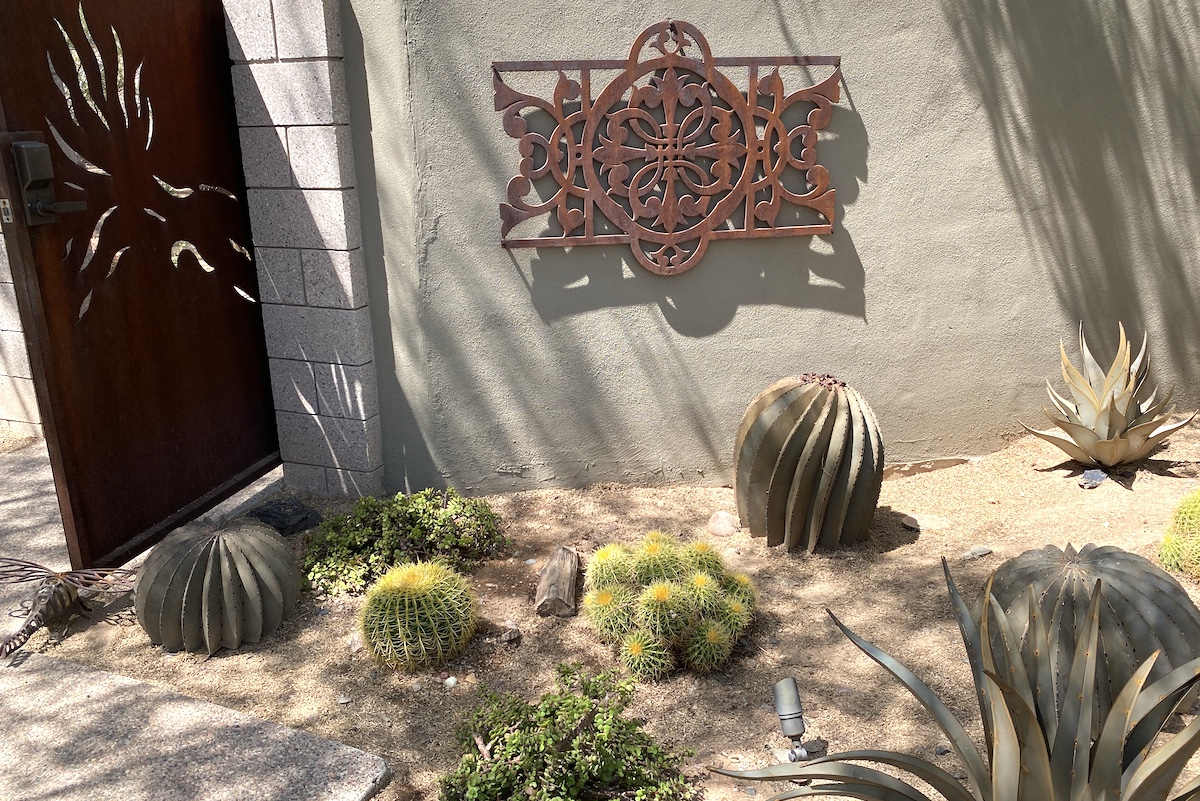
Metal items in this area of Janet's garden include a wrought iron medallion on the wall, a gate, and realistic sculptures of cacti and agaves

Agave macroacantha, golden barrels, metal-and-glass butterfly
No doubt in your area exist ironworkers who do welding, commission pieces, and can give wrought-iron a custom paint color ("powder coat"). Have your "metal guy" transform found objects into works of art that last decades outdoors.
5. Paint block walls
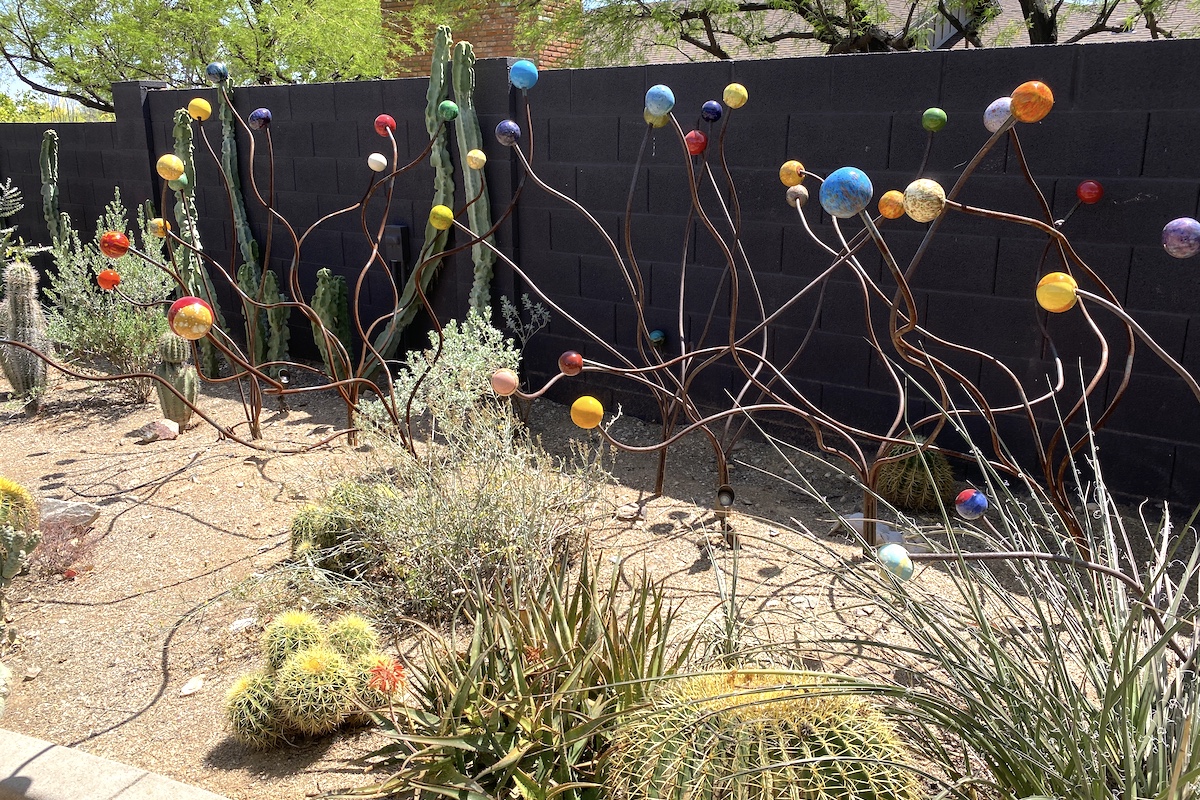
Ceramic balls atop rebar that appear to undulate lend a sense of motion and whimsy to a side garden
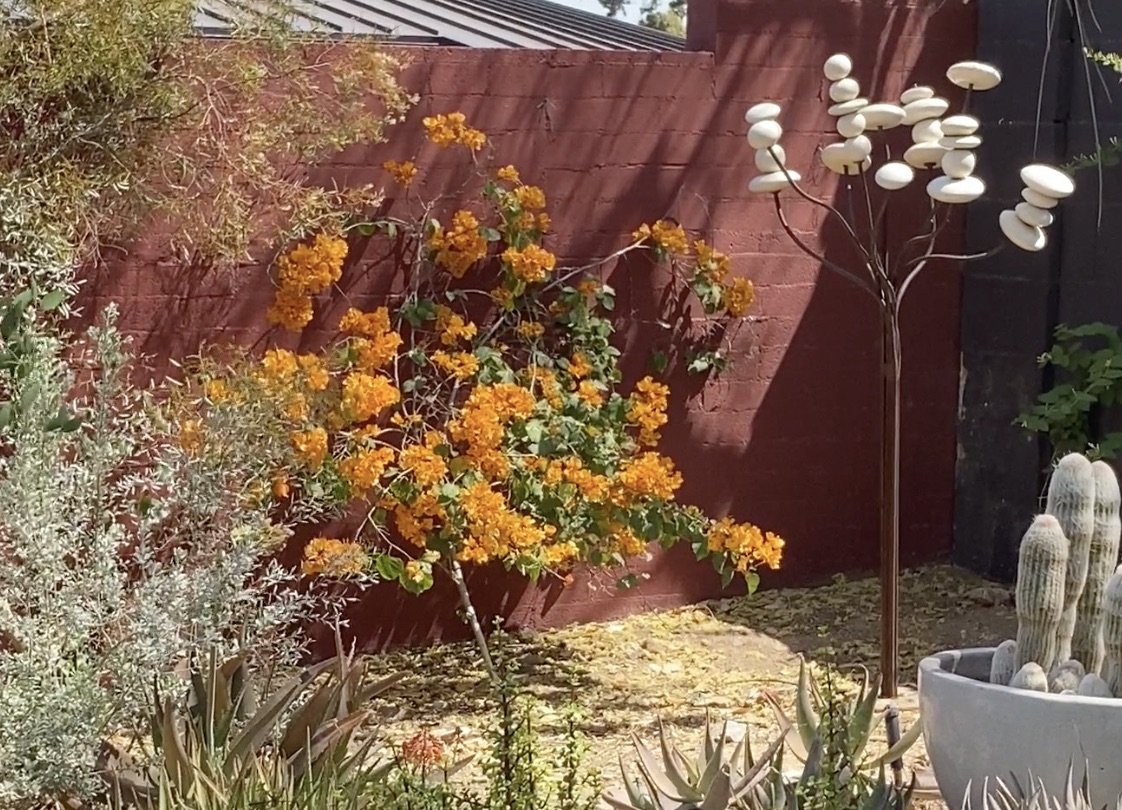
Columnar white cacti (Cleistocactus strausii) repeat and contrast with a nearby sculpture
You can't get more basic or boring than a concrete block wall...unless you paint it, say, chocolate brown or red. Use it as a backdrop for nearby plants or sculptural items. If you're not thrilled with the colored wall, hey, it's only paint.
6. Keep scale and proportion in mind
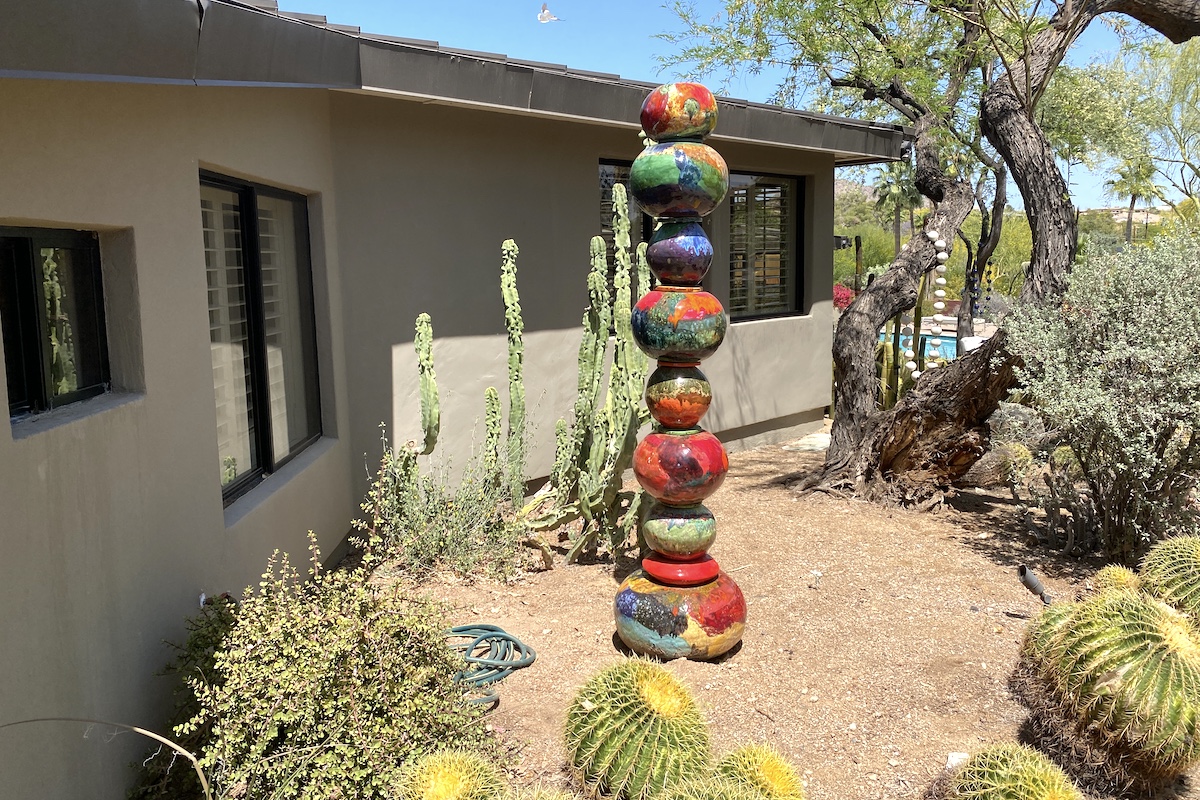
Ceramic ball totem
Avoid cluttering large spaces with little pots and other small stuff. I can't resist admonishing: "whatever you do, don't add silly decorations sold at garden centers." Yes art is subjective, but do try to avoid "cute crap" -- a term I used when expediting magazine photo shoots. The photographer's assistant would discretely remove the grinning bunny and replace it when we were done. Predictably the homeowner would say that the offending object was a gift from a grandchild.
7. Provide a habitat
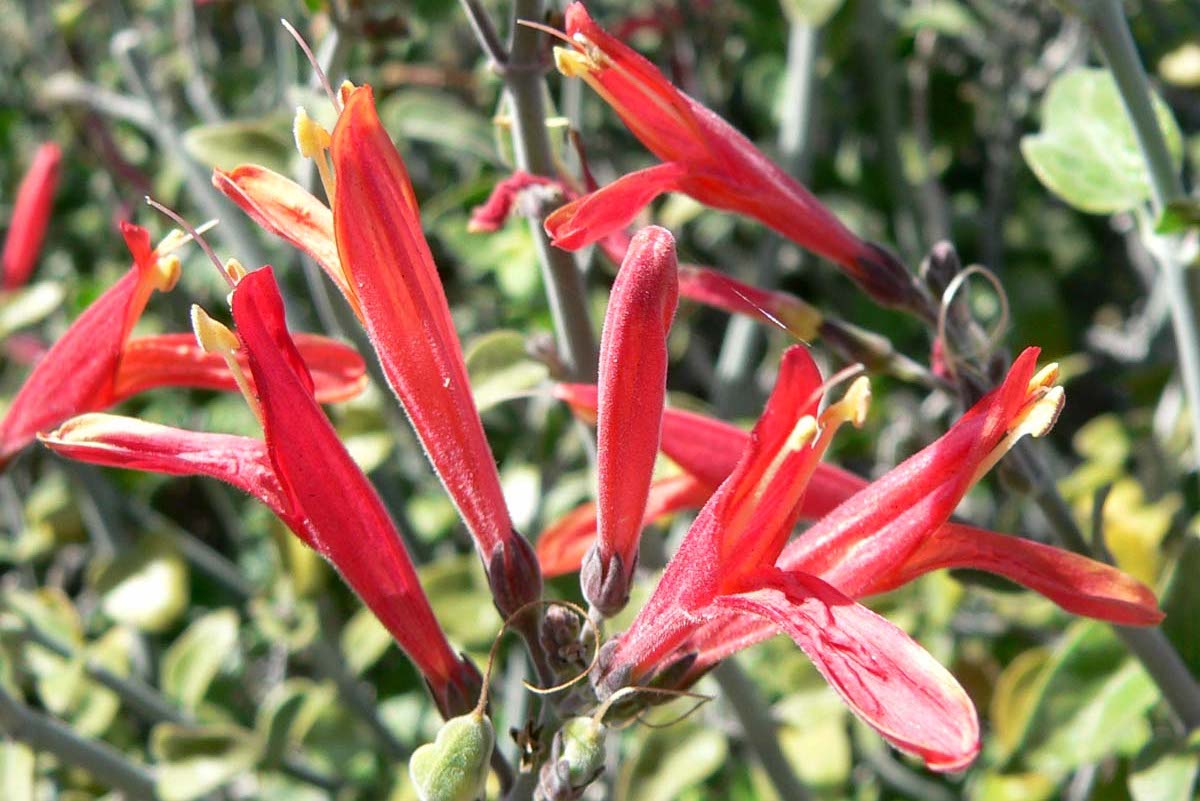
Justicia californica (chuparosa). Photo: Wikipedia, Stan Shebs
Butterflies and hummingbirds appreciate nectar, especially in a hot, dry climate. Have you heard of the desert shrub chuparosa? "Chupar" means "to suck" and "rosa" means rose. "Chupparosa" is Mexican Spanish for hummingbird (although---minor clarification---hummers don't visit roses.) Flowers of chuparosa shrubs are bright red, tubular and nectar-filled.
8. Use translucent plants for drama
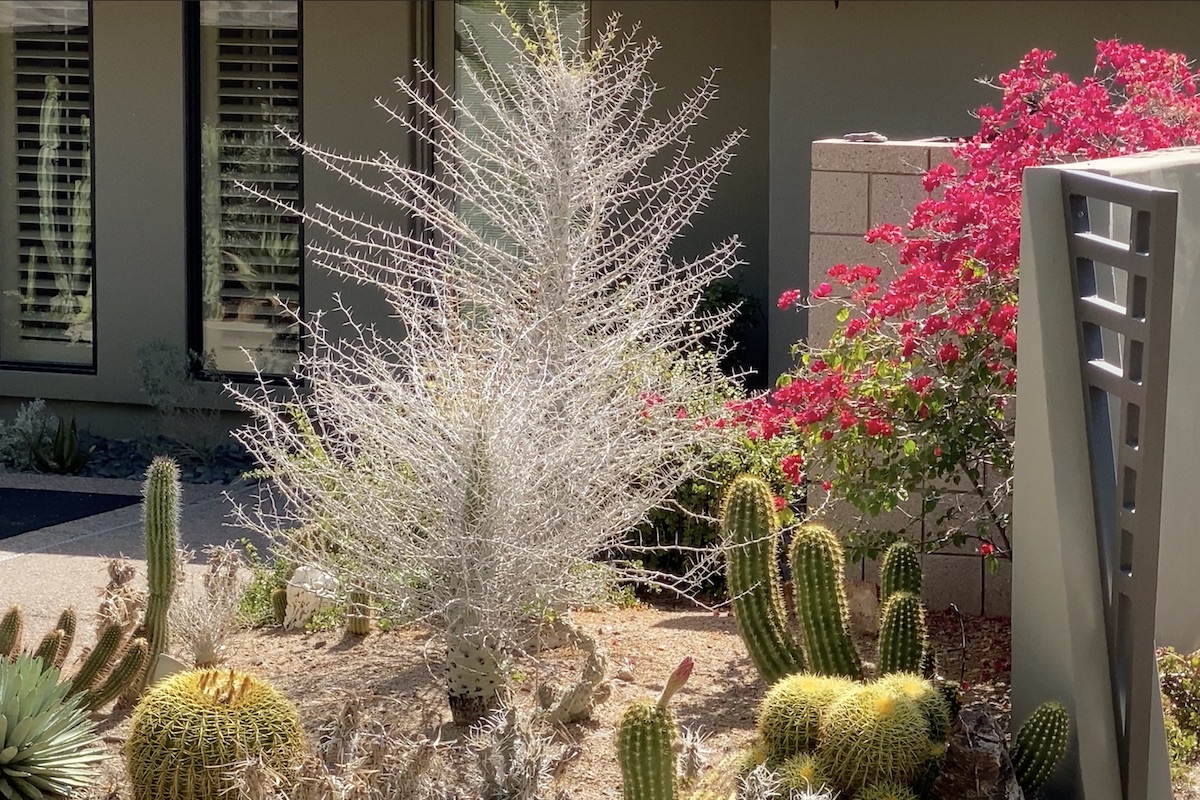
Fouquieria columnaris (Boojum tree), backlit
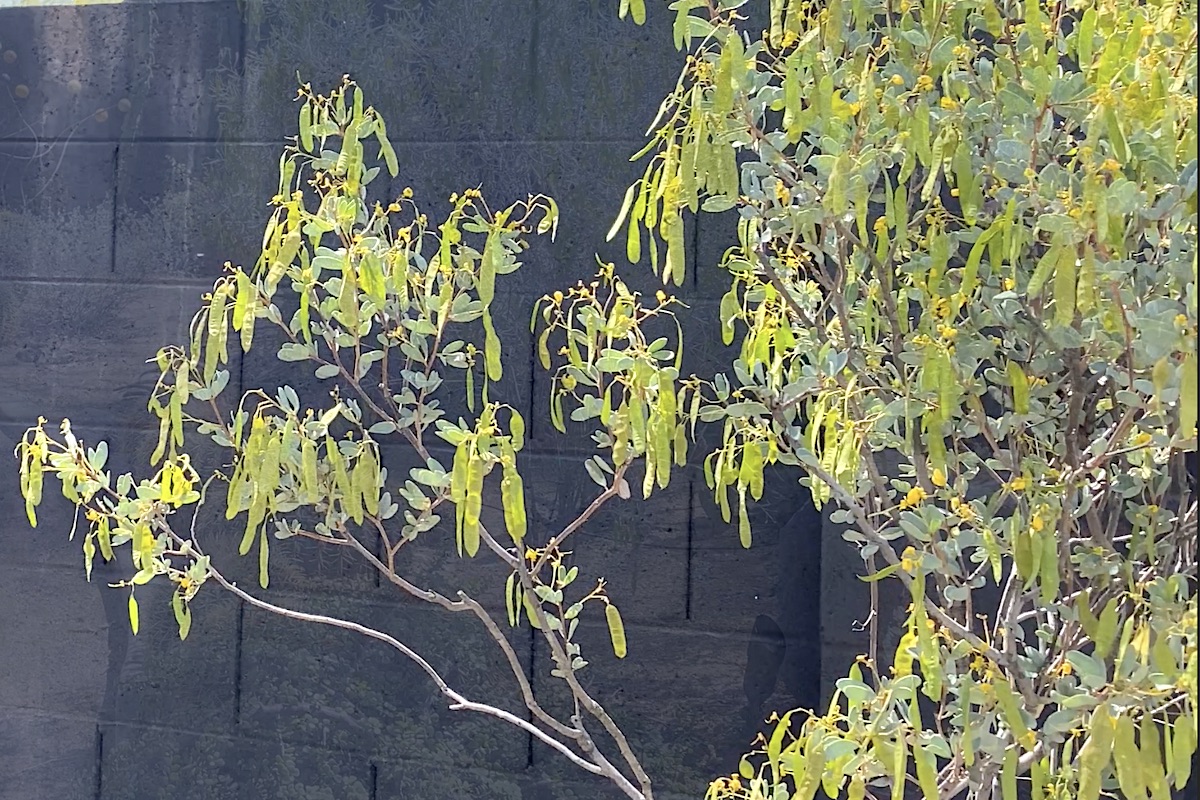
Senna artemisioides (Silver senna)
In Janet's garden, prickly white stems of boojum trees---leafless in spring---glow as though plugged into a light socket. Thin pods of feathery cassia (Senna artemisioides) suggest chartreuse earrings with seed pearls.
9. Repeat and contrast circles and lines
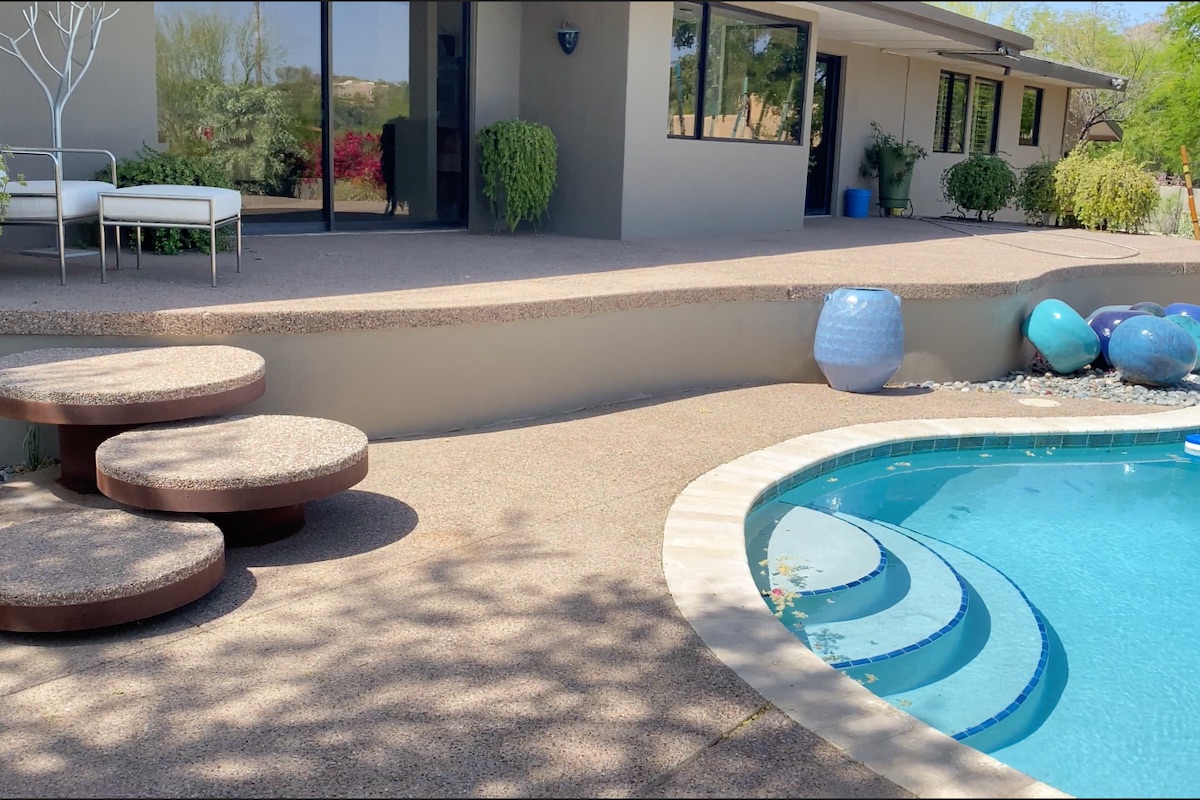
Pool with circles and orbs
Golden barrels are just one type of circle in Janet's garden. Creating yin to her home's linear yang are spherical golden barrel cacti, and overlapping steps in and near the swimming pool. Also poolside are large, ball-like ceramic orbs glazed turquoise and blue. A circular wall, covered with colorful round mosaics, conceals pool equipment.
10. Use silvery gray to rest the eye
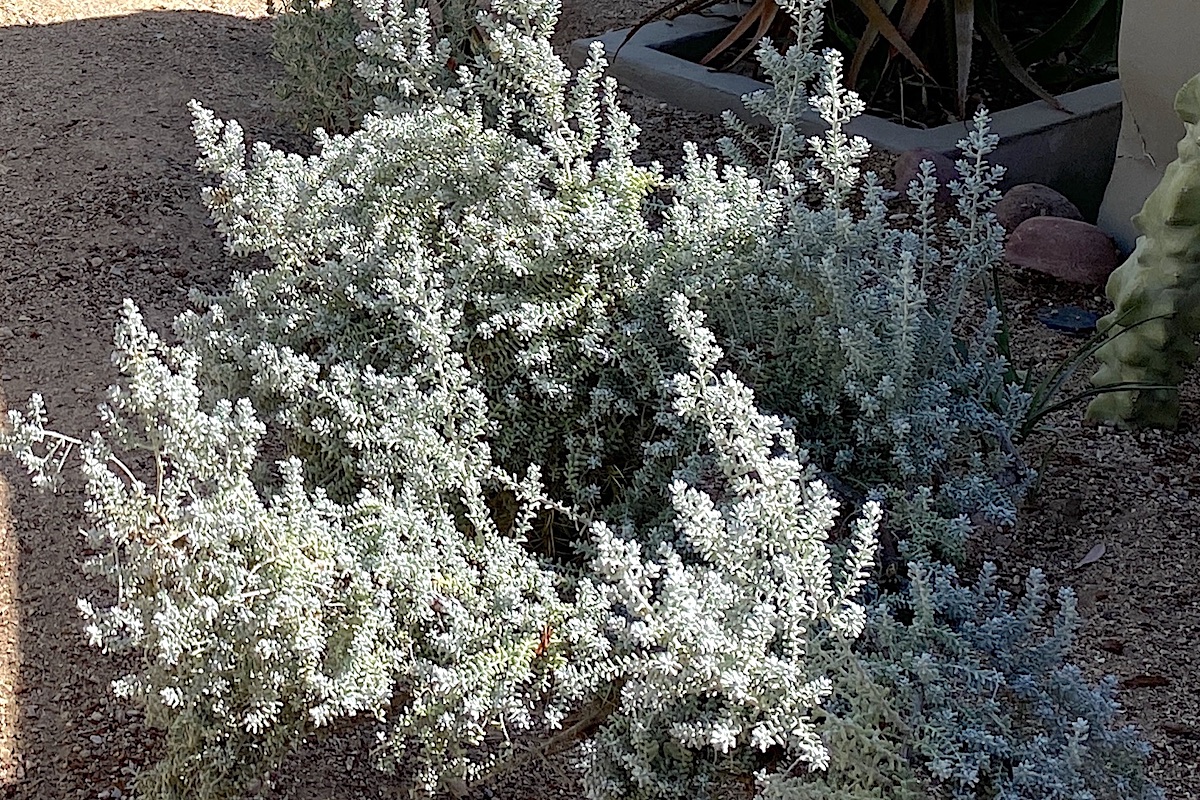
Maireana sedifolia (desert snow bush)
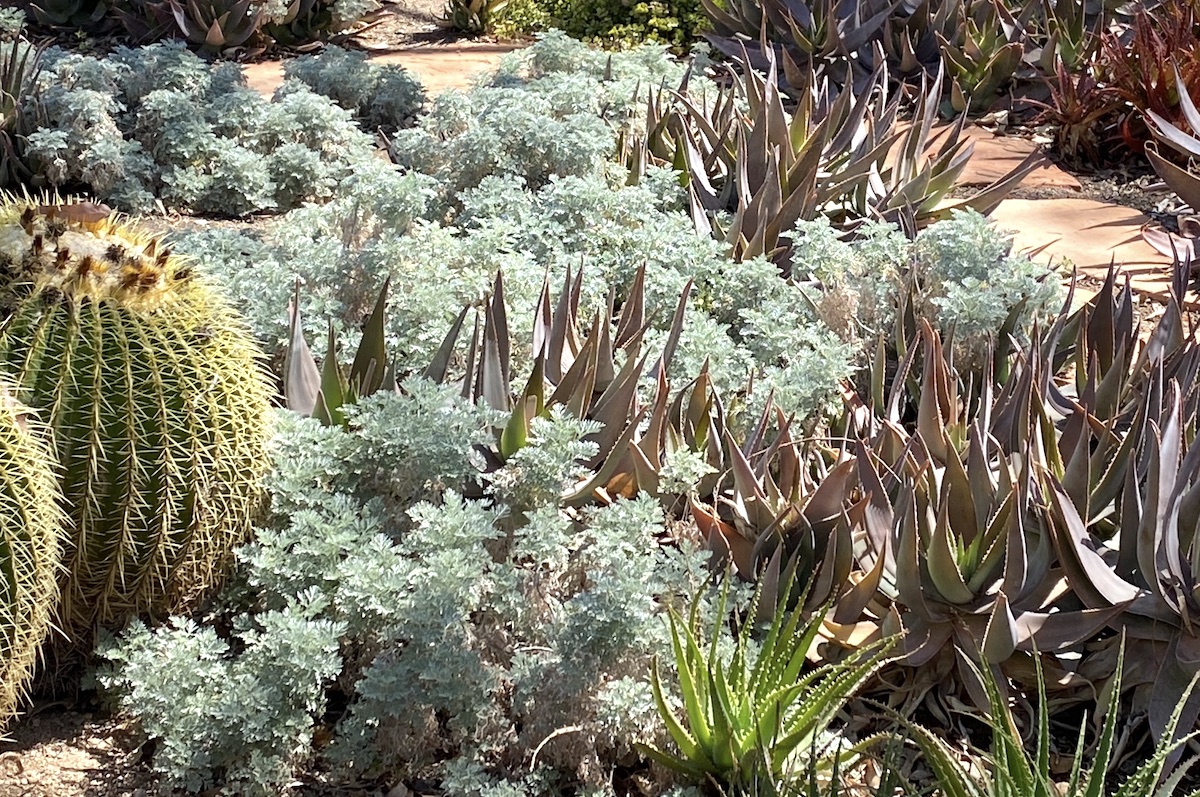
Centaurea cineraria (dusty miller) and aloes
Adding contrast to the bold forms of sculptures, structures, cacti and succulents are drifts of dusty miller (Centaurea cineraria); desert snow bush (Maireana sedifolia) a shrub with rice-sized leaves; upright stems of candelilla (Euphorbia antisyphilitica) and desert marigold (Baileya multiradiata).
11. Frame your views
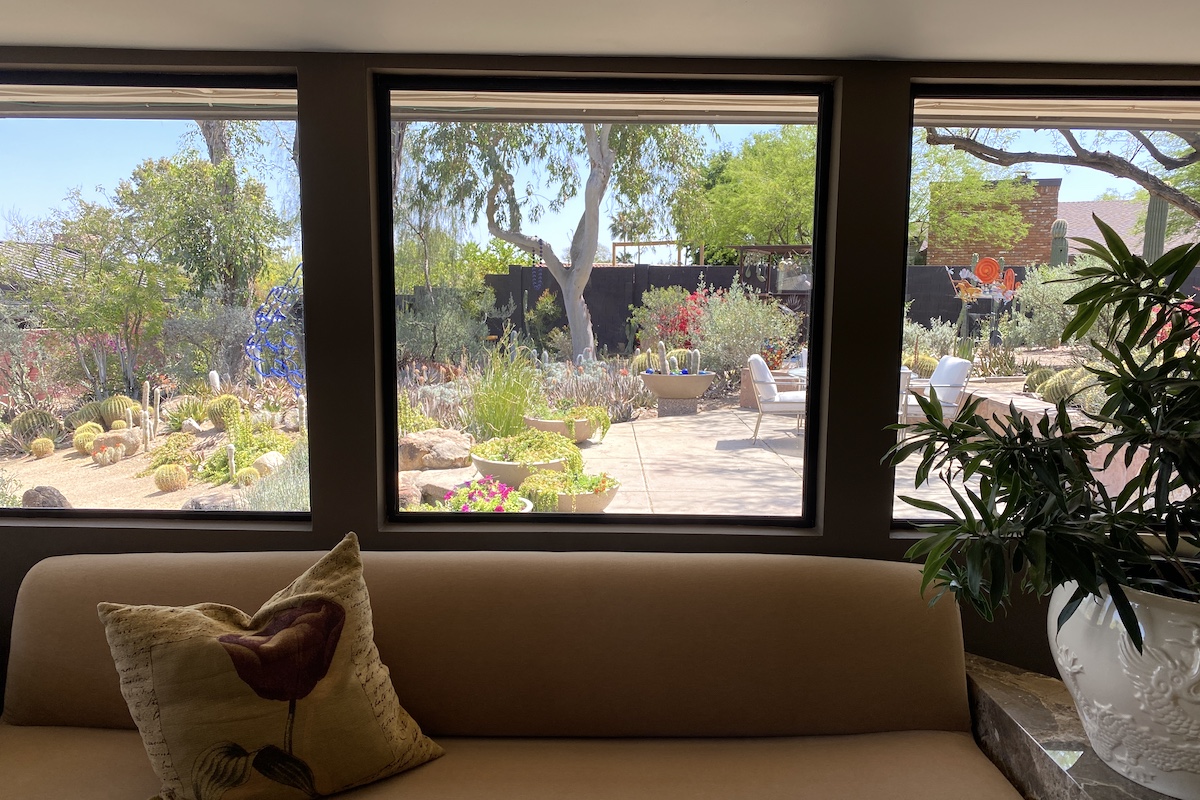
Windows frame succulent garden gallery
When viewed from inside your home, garden areas become three-dimensional works of art framed by windows. You can also frame areas with a camera lens: Hold your phone as though shooting an area of the garden for a post-card, then move plants, rocks and accessories until everything "works."
12. Provide shade ASAP

Back patio sitting area
Janet grows aloes and other plants susceptible to sun-scorch because her garden's desert-adapted trees provide dappled shade. Since trees can take years to mature, it's smart to make them the first plants you install.
must-have for southwestern gardeners
Occasionally I'm asked by gardening enthusiasts who have moved to Arizona how to grow succulents they brought from California. All too often it's a futile pursuit.
Popular succulents---such as echeverias, kalanchoes, crassulas, aeoniums, haworthias---and many aloes and euphorbias---can't handle temperature extremes. If heat and scorching sun don't do them in, winter cold does.
I'm relieved there's finally a book similar to mine that demystifies desert landscaping: Dry Climate Gardening by "AZ plant lady" Noelle Johnson. She lives, gardens, and designs in the Phoenix area.
Especially valuable are the book's plant profiles. If you live inland in Southern CA as I do---where temps soar in summer and drop to freezing in winter---these trees, shrubs and succulents are bulletproof.
The post Design Ideas from an Arizona Artist’s Garden appeared first on Debra Lee Baldwin. Copyright © Debra Lee Baldwin.
from Debra Lee Baldwin https://ift.tt/t0yc75S
via IFTTT

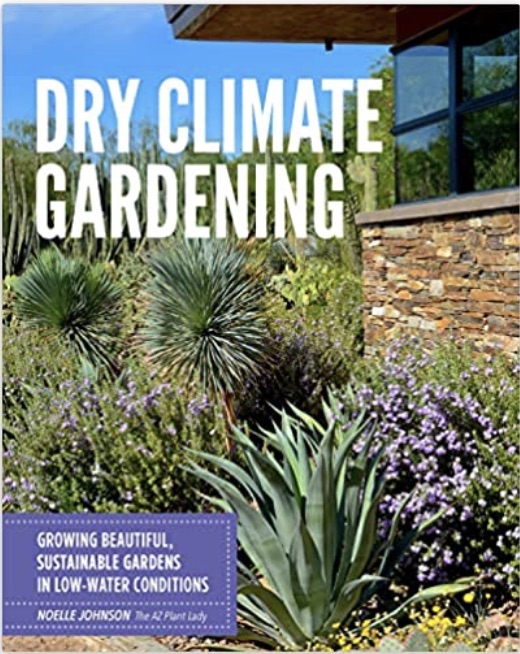
No hay comentarios:
Publicar un comentario